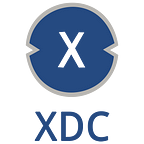Blockchain: It’s time to make invisible technology visible
Witnessing the understandable intrigue, we can only say that blockchain technology’s influence is only expected to grow leaps and bounds. A recent report by World Economic Forum substantiated the hype around blockchain technology when it predicted about 10% of GDP being blockchain technology related by 2025. And, why won’t it be? The potential of blockchain technology to disrupt almost every industry in some way or the other can’t be condoned. Therefore, it’s high time where we not only acquaint people of its full transformative impact but also make this invisible technology ‘visible’ so that it can change many systems that you come across in your day-to-day life.
From understanding the blockchain technology to finding a fan-base
While many blockchain enthusiasts talk of new technology becoming mainstream, there is still a big chunk of people who are unfamiliar with what blockchain is, and what it exactly does. Therefore, it’s important to enlighten them so that not only technically-minded folks but others also form the fan base of revolutionary technology. Since, 2018 will be the year when blockchain technology goes ‘run of the mill’ the industry will not want to see people discussing: What is Blockchain when we have come so far. Let 2018 be the year when Blockchain Technology becomes a household name just like Bitcoin.
Implementing blockchain technology to finding a legitimate use case for blockchain technology
Over the past 2 years, numerous organizations and financial and non-financial institutions have been investing millions in resources to learn and implement the blockchain technology but only a few have been able to find a legitimate or practical use case of blockchain. Blockchain technology provides the exciting possibility of eliminating the “middle man” by fulfilling 3 essential roles — recording transactions, determining identity and establishing contracts. The value that blockchain technology brings to the table certainly makes it viable for real-world use cases.
For example, XinFin successfully demonstrated financing of a solar plant using the game-changing technology. The simulation that involved digitizing and representing a solar plant on the blockchain proved that any projects including those of national infrastructure importance can be financed peer to peer without burdening the government treasury.
Using blockchain for setting up a solar plant is definitely a practical and legitimate use case of the technology. And, what’s more it’s a non-financial use case unlike financial services clients, blockchain is mainly aimed at.
Executing PoCs to proceeding towards production
It won’t be wrong to say that FOMO (Fear of missing out, in urban vocabulary) led to execution of hundreds of PoCs across multiple use cases in year 2017. The reason being, despite the enterprise excitement in this space, most activity was seen restricted to PoCs. It’s as if many were performed just to accomplish one of their resident CTO’s KRAs because only a handful of them went into production stage. We hope that the PoCs conducted across different use cases move into production in the year 2018.
One such PoC that concluded recently is that of Baidu. Chinese web search giant Baidu recently launched its own blockchain-as-a-service (BaaS) platform where it will be contributing to first asset-backed securities exchange products using Blockchain technology in China, thereby providing the most “user-friendly” blockchain service.
In a nutshell, it is the right time to make the invisible Blockchain Technology VISIBLE and MAINSTREAM!
